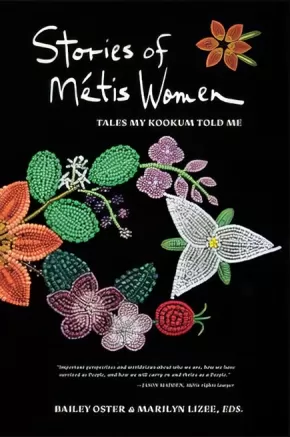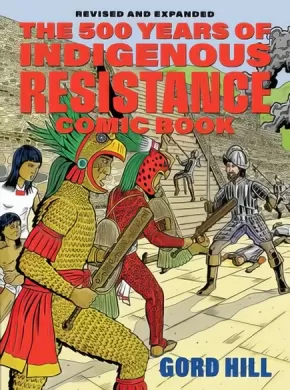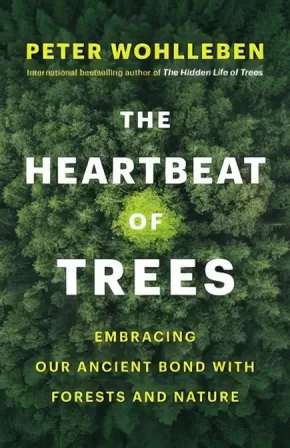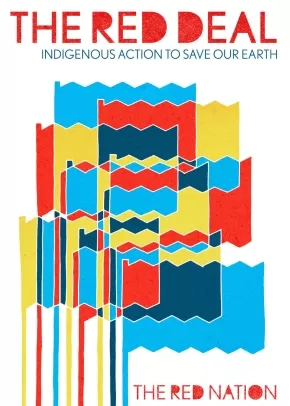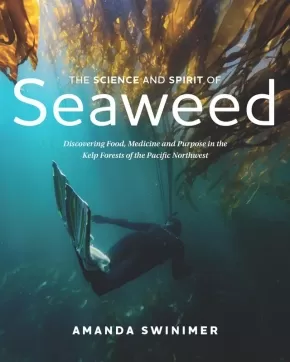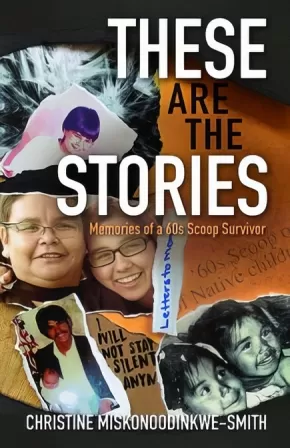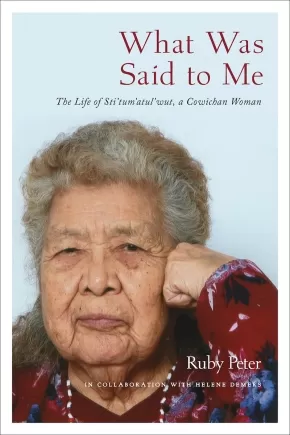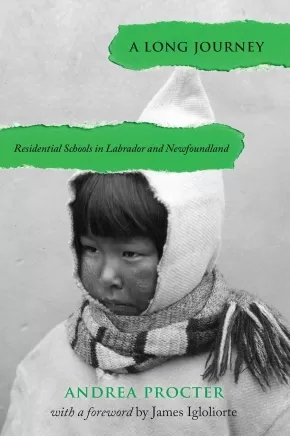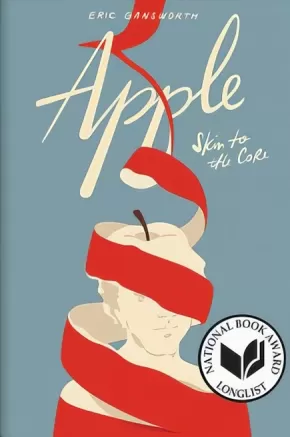
Non-Fiction
286
-
300
of
748 Results;
Sort By
Go To
of 50
Stories of Metis Women: Tales My Kookum Told Me
$35.00
Editors:
Format:
Paperback
Text Content Territories:
Indigenous Canadian; Métis;
Reading Level: N/A
ISBN / Barcode: 9781988824215
Synopsis:
Synopsis:
This book, and accompanying Vimeo documentary link, is a collection of stories about culture, history, and nationhood as told by Métis women. The Métis are known by many names — Otipemisiwak, “the people who own ourselves;” Bois Brules, “Burnt Wood;” Apeetogosan, “half brother” by the Cree; “half-breed,” historically; and are also known as “rebels” and “traitors to Canada.” They are also known as the “Forgotten People.” Few really know their story.
Many people may also think that Métis simply means “mixed,” but it does not. They are a people with a unique and proud history and Nation. In this era of reconciliation, Stories of Métis Women explains the story of the Métis Nation from their own perspective. The UN has declared this “The Decade of Indigenous Languages” and Stories of Métis Women is one of the few books available in English and Michif, which is an endangered language.
Reviews
"With this book, some of these important and unique perspectives and worldviews about who we are as a people, how we have survived as people and how we will carry on and thrive as a people are shared through the writings of the daughters, mothers, aunties and grandmothers of the Métis Nation. I congratulate the Métis women who have taken the time to share and write down some of this knowledge for generations to come." —Jason Madden, Métis rights lawyer and citizen of the Métis Nation
Additional Information
240 pages | 6.00" x 9.00" | 50 black and white illustrations | Paperback
The 500 Years of Indigenous Resistance Comic Book: Revised and Expanded
$21.95
Artists:
Format:
Paperback
Text Content Territories:
Indigenous American; Indigenous Canadian; Indigenous Central American; Indigenous South American;
ISBN / Barcode: 9781551528526
Synopsis:
Synopsis:
A new and expanded version of Gord Hill's seminal illustrated history of Indigenous struggles in the Americas. When it was first published in 2010, The 500 Years of Resistance Comic Book was heralded as a groundbreaking illustrated history of Indigenous activism and resistance in the Americas over the previous 500 years, from contact to present day. Eleven years later, author and artist Gord Hill has revised and expanded the book, which is now available in colour for the first time.
The 500 Years of Indigenous Resistance Comic Book powerfully portrays flashpoints in history when Indigenous peoples have risen up and fought back against colonizers and other oppressors. Events depicted include the the Spanish conquest of the Aztec, Mayan and Inca empires; the 1680 Pueblo Revolt in New Mexico; the Battle of Wounded Knee in 1890; the resistance of the Great Plains peoples in the 19th century; and more recently, the Idle No More protests supporting Indigenous sovereignty and rights in 2012 and 2013, and the resistance to the Dakota Access Pipeline in 2016. Canadian events depicted include the Oka crisis in 1990, the Grand River land dispute between Six Nations and the Government of Canada in 2006, and the Wet'suwet'en anti-pipeline protests in 2020.
With strong, plain language and evocative illustrations, this revised and expanded edition of The 500 Years of Indigenous Resistance Comic Book reveals the tenacity and perseverance of Indigenous peoples as they endured 500-plus years of genocide, massacre, torture, rape, displacement, and assimilation: a necessary antidote to conventional histories of the Americas.
The book includes a foreword by Pamela Palmater, a Mi'kmaq lawyer, professor, and political commentator.
Reviews
"Gord Hill's goal of giving indigenous peoples a better understanding of their past so as to counter the benign version all too often taught in schools and presented in the media makes the format [of his work] the perfect vehicle for his hard-hitting message."-BC Studies
"Gord Hill has put colonial myth-makers on notice with a comic that educates and inspires." - The St'at'imc Runner
"Comics aren't always known for treating serious subjects, but Gord Hill's The 500 Years of Resistance Comic Book adds a dose of reality to the genre. Hill, of the Kwakwaka'wakw nation, has taken the topics of dispossession, genocide, and the colonization of First Nations in the western hemisphere and, surprisingly, pulled off a rendering in comic book form." -Dissident Voice
"Never before have I come across a non-fiction graphic novel capable of evoking such a powerful emotional response. Dealing with such topics as genocide, oppression and assimilation the comic is sure to cause frustration and sadness in the reader. At the same time, 500 Years of Resistance is inspirational and empowering, accurately depicting the strength and nobility of Native warriors. Gord's straightforward approach to writing coupled with his iconic illustrations has created a truly groundbreaking comic book." -Redwire Media
"An excellent introduction to the tremendous historical and ongoing legacy of resistance on the part of Indigenous peoples in Canada and elsewhere in the continent against the settler colonial regimes that continue to oppress and exploit." -Popmatters. com
Educator Information
This book is available in French: 500 ans de résistance autochtone
Additional Information
144 pages | 9.00" x 12.00" | Comic Book | Colour Illustrations Throughout
The Heartbeat of Trees: Embracing Our Ancient Bond with Forests and Nature
$32.95
Format:
Hardcover
Reading Level: N/A
ISBN / Barcode: 9781771646895
Synopsis:
Synopsis:
A powerful return to the forest, where trees have heartbeats and roots are like brains that extend underground. Where the color green calms us, and the forest sharpens our senses.
In The Heartbeat of Trees, renowned forester Peter Wohlleben draws on new scientific discoveries to show how humans are deeply connected to the natural world.In an era of cell phone addiction, climate change, and urban life, many of us fear we’ve lost our connection to nature—but Peter Wohlleben is convinced that age-old ties linking humans to the forest remain alive and intact.
Drawing on science and cutting-edge research, The Heartbeat of Trees reveals the profound interactions humans can have with nature, exploring:
- the language of the forest
- the consciousness of plants
- and the eroding boundary between flora and fauna.
A perfect book to take with you into the woods, The Heartbeat of Trees shares how to see, feel, smell, hear, and even taste the forest.
Peter Wohlleben, renowned for his ability to write about trees in an engaging and moving way, reveals a wondrous cosmos where humans are a part of nature, and where conservation and environmental activism is not just about saving trees—it’s about saving ourselves, too.
Reviews
“As human beings, we’re desperate to feel that we’re not alone in the universe. And yet we are surrounded by an ongoing conversation that we can sense if, as Peter Wohlleben so movingly prescribes, we listen to the heartbeat of all life.” —Richard Louv, author of Our Wild Calling and Last Child in the Woods
“Astonishment after astonishment—that is the great gift of The Heartbeat of Trees. It is both a celebration of the wonders of trees, and a howl of outrage at how recklessly we profane them.” —Kathleen Dean Moore, author of Earth’s Wild Music
“As Peter Wohlleben reminds us in The Heartbeat of Trees, trees are the vocabulary of nature as forests are the brainbank of a living planet. This was the codex of the ancient world, and it must be the fine focus of our future.” —Dr. Diana Beresford-Kroeger, author of To Speak for the Trees and The Global Forest
Additional Information
264 pages | 5.50" x 8.50" | Hardcover
The Power of Style: How Fashion and Beauty Are Being Used to Reclaim Cultures
$14.95
Format:
Paperback
Text Content Territories:
Indigenous Canadian;
ISBN / Barcode: 9781773214917
Synopsis:
Synopsis:
Style is not just the clothes on our backs—it is self-expression, representation, and transformation.
As a fashion-obsessed Ojibwe teen, Christian Allaire rarely saw anyone that looked like him in the magazines or movies he sought out for inspiration. Now the Fashion and Style Writer for Vogue, he is working to change that—because clothes are never just clothes. Men’s heels are a statement of pride in the face of LGTBQ+ discrimination, while ribbon shirts honor Indigenous ancestors and keep culture alive. Allaire takes the reader through boldly designed chapters to discuss additional topics like cosplay, makeup, hijabs, and hair, probing the connections between fashion and history, culture, politics, and social justice.
Reviews
“A vibrant read about the connections between fashion, culture, and social justice.” — Kirkus Reviews, 02/23/21
“The book to appeal to a wide age range. It is important that readers of all ages be given the opportunity to learn that there are others who have had the same or similar experiences of feeling that they were different from their peers because of the way that they looked or dressed. Highly Recommended.” — CM Reviews, 02/12/21
“Dazzling and empowering . . . Fab drag queens, genderqueer and BIPOC YouTubers demoing makeup, plus-size and gender-bending cosplayers, men wearing high heels and fem fashion—they’re all here, a proud and dazzling explosion of confetti transforming the landscape.” — Booklist, *starred review, 03/02/21
Educator Information
Recommended for ages 12+
Common Core Correlations
CCSS.ELA-Literacy Strand-Reading literature:
W.6.1,1a,1b,1c,1d,1e
SL.6.1,1a,1b,1c,1d,1
RI.6.1,2,3,4,5,6,7,8
L.6.1,1a,2,2a,2b,3,3
Reading Level: Lexile 1070L
The Power of Style is a Top Ten Quick Picks for Reluctant Young Adult Readers, YALSA
Additional Information
96 pages | 8.00" x 10.00"
The Red Deal: Indigenous Action to Save Our Earth
$22.95
Format:
Paperback
Text Content Territories:
Indigenous American; Native American;
Grade Levels: 12; University/College;
ISBN / Barcode: 9781942173434
Synopsis:
Synopsis:
When the Red Nation released their call for a Red Deal, it generated coverage in places from Teen Vogue to Jacobin to the New Republic, was endorsed by the DSA, and has galvanized organizing and action. Now, in response to popular demand, the Red Nation expands their original statement filling in the histories and ideas that formed it and forwarding an even more powerful case for the actions it demands.
One-part visionary platform, one-part practical toolkit, the Red Deal is a platform that encompasses everyone, including non-Indigenous comrades and relatives who live on Indigenous land. We—Indigenous, Black and people of color, women and trans folks, migrants, and working people—did not create this disaster, but we have inherited it. We have barely a decade to turn back the tide of climate disaster. It is time to reclaim the life and destiny that has been stolen from us and riseup together to confront this challenge and build a world where all life can thrive. Only mass movements can do what the moment demands. Politicians may or may not follow--it is up to them--but we will design, build, and lead this movement with or without them.
The Red Deal is a call for action beyond the scope of the US colonial state. It’s a program for Indigenous liberation, life, and land—an affirmation that colonialism and capitalism must be overturned for this planet to be habitable for human and other-than-human relatives to live dignified lives. The Red Deal is not a response to the Green New Deal, or a “bargain” with the elite and powerful. It’s a deal with the humble people of the earth; a pact that we shall strive for peace and justice and a declaration that movements for justice must come from below and to the left.
Reviews
“The Red Nation has given us The Red Deal, an Indigenous Peoples’ world view and practice that leads to profound changes in existing human relations. Five hundred years of European colonialism, which produced capitalist economic and social relations, has nearly destroyed life itself. Technology can be marshaled to reverse this death march, but it will require a vision for the future and a path to follow to arrive there, and that is what The Red Deal provides.”—Roxanne Dunbar-Ortiz, author of An Indigenous Peoples’ History of the United States
"The Red Deal is an incendiary and necessary compilation. With momentum for a Green New Deal mounting, the humble and powerful organizers of The Red Nation remind us that a Green New Deal must also be Red—socialist, committed to class struggle, internationalist in orientation, and opposed to the settler-colonial theft of Indigenous lands and resources. Redistribution also requires reparations and land back. The Red Deal is a profound call to action for us all."—Harsha Walia, author of Undoing Border Imperialism and Border and Rule: Global Migration, Capitalism, and the Rise of Racist Nationalism
“We really need The Red Deal because it forces open a critical conversation on how Land Back can be a platform for mass mobilization and collective struggle. The Red Deal poignantly argues that if we do not foreground decolonization and Indigenous liberation in climate justice strategies such as the Green New Deal, we will reproduce the violence of the original New Deal that dammed life-giving rivers and further dispossessed Indigenous peoples of their lands. Strategically, The Red Deal shows how, if we understand green infrastructure and economic restructuring as anticolonial struggle, as well as an anticapitalist, we can move from reforms that deny Indigenous jurisdiction towards just coalitions for repossession that radically rethink environmental policy and land protection without sacrificing Indigenous life and relations.”—Shiri Pasternak, author of Grounded Authority: The Algonquins of Barriere Lake Against the State
“The Red Deal asserts that the fight for climate justice must center Native people when it comes to the issues that disproportionately impact Native communities, but it also communicates what the Green New Deal does not — namely, that public lands are stolen lands and climate change is significantly caused by just a few industries, which the government has at worst neglected to hold accountable and at best assisted in their efforts to mine the earth for resources in a move that put profits over people.” —Teen Vogue
“For the Red Nation, living and being interdependent with Mother Nature is explicitly anticapitalist. An ethos merely hinted at in the Green New Deal, The Red Deal understands that capitalism fundamentally protects wealth, not life”—The Politic
“The Red Nation also names Black abolitionists as an inspiration for the Red Deal, citing the links between mass incarceration and detention and climate change. They further note that police departments, prisons, and the U.S. military receive billions of taxpayer dollars annually while doing irreparable harm to Native Americans, Black people, and the Earth.” —Essence
Educator Information
Excerpt from the book:
The Red Deal begins with the oldest yet often forgotten struggle on this continent: ending the occupation. While usually erased from the history of this nation, settler colonial occupation has fundamentally shaped the development of the United States and indeed the world that it dominates economically and politically. Ending the occupation links those of us in the seat of empire with those who face its weapons, soldiers, and policies around the world. Together we share the common enemy of US imperialism, and Indigenous people here have fought against it since the first settlers began to occupy our lands by force. It is important to remember that the very first act of US imperialism was the military and settler incursions on Indigenous land as the fledgling colonies expanded westward. This is why we begin with ending the occupation.
The struggle against occupation on this continent has remained strong throughout history and continues to this day. We’ve seen this in the global uprisings led by Black relatives who have been resisting the colonization of Africa and the enslavement and oppression of African people stolen to work on this continent for centuries. The uprisings during the summer of 2020, even with the global COVID-19 pandemic, built upon the decades of Black resistance to police violence and the everyday brutality of American society towards Black people, and exploded into some of the largest mobilizations in US history. The spread of uprisings throughout cities across the country was also marked by the sharpening of tactics and clarity of the roots of the issues, with images of burnt down police precincts and flipped cop cars evoking memories of Black and Indigenous resistance to slave plantations and frontier forts. Calls for abolition of police and prisons arose with renewed volume, stretching forward from a long history of abolitionist struggle.
It is important that we continue nurturing these histories and movements of struggle against occupation on these lands and continue to build relationships with others globally who face the violence of occupation. We begin with addressing those things that act as obstacles to our collective liberation: the prisons and detention centers filled with our family members; the police officers and prison guards who stand between us and the capitalist interests they defend; and the military, police, and vigilantes who murder our relatives. As we know, colonial occupation is upheld by constant threats of violence and in many instances, actual violence. It is therefore no surprise that these obstacles to our life and wellbeing that employ violence in order to maintain the occupation, receive the largest proportions of resources by the US settler state. We seek to dismantle these institutions that get in our way of living good lives, and we aim to divert resources away from them through divestment.
This is just the first step, though. It is not enough to be against any one thing, even something as big, evil, and all-encompassing as colonial occupation. Ending the occupation gives us the space to breathe and envision other possibilities that we are for, and we must be clear about what we are for. We are for Indigenous life, for the life of all human and other-than-human beings. And in order to live good lives, we must heal ourselves from the destruction caused by colonialism and capitalism by stopping what harms us and desecrates our land and begin to build what will sustain us.
Additional Information
144 pages | 5.00" x 7.00" | b&w illustrations
Authenticity Note: The Red Nation is a coalition of Native and non-Native activists, educators, students, and community organizers advocating Native liberation. The Red Deal was written collectively by members of the Red Nation and the allied movements and community members who comprised the Red Deal coalition. Everyone from youth to elders; from knowledge keepers to farmers contributed to the creation of The Red Deal. It's up to readers to determine if this title works as an authentic resource for their purposes
The Science and Spirit of Seaweed: Discovering Food, Medicine and Purpose in the Kelp Forests of the Pacific Northwest
$28.95
Format:
Paperback
ISBN / Barcode: 9781550179613
Synopsis:
Synopsis:
Sustainable Pacific Northwest-based seaweed harvester Amanda Swinimer describes the ecology, culinary uses, evidence-based health benefits and climate change-resisting potential of seaweed and shares highlights from her remarkable life beneath the waves.
Related to the most ancient living organisms on earth, seaweeds are incredible and unique life forms, sharing qualities with both plants and animals, as well as fungi. They have been prized as a nutrient-dense food source for millennia and contain essential vitamins, minerals and fatty acids, protein and fibre as well as biologically active compounds not found anywhere else in nature. Seaweeds are also a source for innovations combating climate change due in part to their ability to absorb massive quantities of carbon dioxide.
Based in the Pacific Northwest, home to the greatest cold-water seaweed diversity in the world, Amanda Swinimer has made her living from the sustainable harvest of seaweeds for over two decades. In The Science and Spirit of Seaweed, Swinimer reflects on the journey that led to her successful seaweed harvesting business and provides identification information, ecologically sound harvesting techniques, traditional medicinal application and evidence-based health information for more than twenty varieties of seaweeds commonly found from California to Alaska. She also includes notes on culinary and skin-care uses for several types of seaweeds.
Complemented by vibrant underwater photography, beautiful illustrations and chef-inspired recipes, this volume richly conveys the benefits and wonder of living in harmony with the ocean. It will be a welcome resource to beachcombers, foragers and anyone fascinated by the marvels of the natural world.
Reviews
"This beautiful book will appeal to poets and photographers as surely as it will to scientists, dreamers, harvesters and beachwalkers–every page opening a little window to the soul of the sea and all that dwells within. A timely salute to the synergy between man, ocean, plant, animal, place, spirit and science." — Prannie Rhatigan, author of Irish Seaweed Kitchen, July 2021
"This tour through Amanda Swinimer’s Mermaid Garden ebbs and flows through seaweed fact and the author’s fantasies and reminiscences, punctuated by Chris Adair’s surreal photos of Amanda suspended mid-water. Red, green and brown seaweeds are described with culinary, health and spa anecdotes. Thirty pages are dedicated to "Seaweed & Health," where the promise of seaweed in the treatment and prevention of diseases, many associated with aging, is explored (this section is neatly referenced). Fitting to Amanda’s sprinkling of ecological concern throughout the book, is the section on "Algae: A Global Perspective." Here we glimpse the role of seaweeds in moderating our abused environment and being the prime producer energizing the coastal ecosystem. The recipes are a pleasure. They are original. Many are provided by featured chefs. Swinimer has created a delightful, readable, informative and richly illustrated resource on seaweeds that I highly recommend." — Louis Druehl, author of Pacific Seaweeds: A Guide to Common Seaweeds of the West Coast, July 2021
"This beautifully written book is an irresistible and unique fusion of practical field guide, personal memoir and warm wisdom of how to live well in a home place. A wonderful ramble through the world of seaweeds from basic identification and natural science to culinary uses and medicine, Amanda’s creation brings us into her sphere by melding science, love and reverence in an inspiring ode to these humble but magnificent species." — Fiona Hamersley Chambers, ethnobotanist and owner of Metchosin Farm, July 2021
Additional Information
256 pages | 8.00" x 10.00" | 300 photos | Paperback
These Are the Stories: Memories of a 60s Scoop Survivor
$22.00
Format:
Paperback
Text Content Territories:
Indigenous Canadian; First Nations; Anishinaabeg; Ojibway; Saulteaux;
Reading Level: N/A
ISBN / Barcode: 9781928120278
Synopsis:
Synopsis:
These are the Stories is a memoir presented in short chapters, comprising the life of a survivor of the Sixties Scoop. Christine Miskonoodinkwe Smith reveals her experiences in the child welfare system and her journey towards healing in various stages of her life. As an adult, she was able to reconnect with her birth mother. Though her mother passed shortly afterward, that reconnection allowed the author to finally feel "complete, whole, and home." The memoir details some of the author's travels across Canada as she eventually made a connection with the Peguis First Nation in Manitoba.
A memoir in the vein of Colleen Hele Cardinal's Raised Somewhere Else and Alicia Elliot's A Mind Spread Out On the Ground, These are the Stories is an inspirational and courageous telling of a life story.
Additional Information
170 pages | 5.50" x 8.50" | Paperback
What Comes From Spirit: Richard Wagamese Selected (HC)
$26.95
Editors:
Format:
Hardcover
Text Content Territories:
Indigenous Canadian; First Nations; Anishinaabeg; Ojibway; Wabaseemoong First Nation;
Reading Level: N/A
ISBN / Barcode: 9781771622752
Synopsis:
Synopsis:
Richard Wagamese, one of Canada’s most celebrated Indigenous authors and storytellers, was a writer of breathtaking honesty and inspiration. Always striving to be a better, stronger person, Wagamese shared his journey through writing, encouraging others to do the same.
Following the success of Embers, which has sold almost seventy thousand copies since its release in 2016, this new collection of Wagamese’s non-fiction works, with an introduction by editor Drew Hayden Taylor, brings together more of the prolific author’s short writings, many for the first time in print, and celebrates his ability to inspire. Drawing from Wagamese’s essays and columns, along with preserved social media and blog posts, this beautifully designed volume is a tribute to Wagamese’s literary legacy.
Reviews
"Treasure these words. Honour his thoughts. But don’t read it too fast. Soak it in. Enjoy every morsel. Linger on each page because every paragraph has nuggets of understanding. Lines of wisdom. Stories to appreciate." — Drew Hayden Taylor
Additional Information
176 pages | 5.50" x 8.00" | Hardcover
What Was Said to Me: The Life of Sti'tum'atul'wut, a Cowichan Woman
$24.95
Format:
Paperback
Text Content Territories:
Indigenous Canadian; First Nations; Salish; Coast Salish; Cowichan;
Grade Levels: 12; University/College;
ISBN / Barcode: 9780772679383
Synopsis:
Synopsis:
A narrative of resistance and resilience spanning seven decades in the life of a tireless advocate for Indigenous language preservation.
Life histories are a form of contemporary social history and convey important messages about identity, cosmology, social behaviour and one’s place in the world. This first-person oral history—the first of its kind ever published by the Royal BC Museum—documents a period of profound social change through the lens of Sti’tum’atul’wut—also known as Mrs. Ruby Peter—a Cowichan elder who made it her life’s work to share and safeguard the ancient language of her people: Hul’q’umi’num’.
Over seven decades, Sti’tum’atul’wut mentored hundreds of students and teachers and helped thousands of people to develop a basic knowledge of the Hul’q’umi’num’ language. She contributed to dictionaries and grammars, and helped assemble a valuable corpus of stories, sound and video files—with more than 10,000 pages of texts from Hul’q’umi’num’ speakers—that has been described as “a treasure of linguistic and cultural knowledge.” Without her passion, commitment and expertise, this rich legacy of material would not exist for future generations.
In 1997 Vancouver Island University anthropologist Helene Demers recorded Sti’tum’atul’wut’s life stories over nine sessions. The result is rich with family and cultural history—a compelling narrative of resistance and resilience that promises to help shape progressive social policy for generations to follow.
Additional Information
240 pages | 6.00" x 9.00"
Where the Power Is: Indigenous Perspectives on Northwest Coast Art
$65.00
Format:
Hardcover
Text Content Territories:
Indigenous Canadian;
Reading Level: N/A
ISBN / Barcode: 9781773270517
Synopsis:
Synopsis:
Where the Power Is: Indigenous Perspectives on Northwest Coast Art is a landmark volume that brings together over eighty contemporary Indigenous knowledge holders with extraordinary works of historical Northwest Coast art, ranging from ancient stone tools to woven baskets to carved masks and poles to silver jewellery. First Nations Elders, artists, scholars, and other community members visited the Museum of Anthropology at the University of British Columbia to connect with these objects, learn from the hands of their ancestors, and share their thoughts and insights on how these belongings transcend the category of “art” or “artifact” to embody vital ways of knowing and being in the world. Texts by the authors sketch the provenance of the objects, and, in dialogue with the commentators, engage in critical and necessary conversations around the role of museums that hold such collections.
The voices within are passionate, enlightening, challenging, and humorous. The commentators speak to their personal and family histories that these objects evoke, the connections between tangible and intangible culture, and how this “art” remains part of Northwest Coast Indigenous peoples’ ongoing relationships to their territories and political governance. Accompanied by over 300 contemporary and historical photographs, this is a vivid and powerful document of Indigenous experiences of reconnection, reclamation, and return.
Featuring contributions by:
ʼLiyaaʼmlaxha—Leonard Alexcee, Goldʼm Nitsʼk—Wii Gandoox—Mona Alexcee, Widiimas—Peter Alexcee, Kʼodalagalis—Byron Alfred, Skwiixta—Karen Anderson, Chaudaquock—Vera Asp, Don Bain, Stan Bevan, Jo Billows, Dempsey Bob, Raymond Boisjoly, Naxshageit—Alison Bremner, Wákas—Irene Brown, Tʼaakeit Gʼaayaa—Corey Bulpitt, Vanessa Campbell, Jisgang—Nika Collison, Nalaga—Donna Cranmer, Gloria Cranmer Webster, Joe David, Guud san glans—Robert Davidson, ʼWalas Gwaʼyam—Beau Dick, Idtaawgan—Mervin Dunn, Sharon Fortney, Yéil Ya-Tseen—Nicholas Galanin, qiyəplenəxw—Howard E. Grant, sʔəyəłəq—Larry Grant, taχwtəna:t—Wendy Grant-John, Müsiiʼn—Phil Gray, Tʼuuʼtk—Robin R.R. Gray, Wii Gwinaał—Henry Green, secəlenəxw—Morgan Guerin, Haaʼyuups, KC (Kelsey) Hall, J̌i:ƛʼmɛtəm—Harold Harry, qoqʼwɛssukwt—Katelynn Harry, 7idansuu—James M. Hart, YaʼYa Heit, Kwakwabalasamayi Hamasaka—Alan Hunt, Corrine Hunt, Tłaliłilaʼogwa—Sarah Hunt, Tsēmā Igharas, Pearl Innis, Haʼhl Yee—Doreen Jensen, Kwankwanxwaligi—Robert Joseph, kwəskwestən—James Kew, Gigaemi Kukwits, Peter Morin, Nugwam ʼMaxwiyalidzi—Kʼodi Nelson, ʼTayagilaʼogwa—Marianne Nicolson, Gwiʼmolas—Ryan Nicolson, Jaad Kuujus—Kwaxhiʼlaga—Meghann OʼBrien, Ximiq—Dionne Paul, A-nii-sa-put—Tim Paul, Xwelíqwiya—Rena Point Bolton, Oqwiʼlowgʼwa—Kim Recalma-Clutesi, Skeena Reece, Nʼusi—Ian Reid, Greg A. Robinson, Siʼt Kwuns—Isabel Rorick, Maximus (Max) Savey, Anaht pi ya tuuk—Sheila Savey, Linda Smith, Xsim Ganaaʼw—Laurel Smith Wilson, θəliχwəlwət—Debra Sparrow, səlisəyeʔ—Leona Sparrow, Wedłidi Speck, Marika Echachis Swan, Simʼoogit Gawaakhl of Wilps Luuyaʼas—Norman Tait, Snxakila—Clyde Tallio, Nakkita Trimble, Xˇùsəmdas Waakas—Ted Walkus, Nuuwagawa—Evelyn Walkus Windsor, Hiłamas—William Wasden, Jr., Tsamiianbaan—William White, Tania Willard, Skiljaday—Merle Williams, Gid7ahl-Gudsllaay Lalaxaaygans—Terri-Lynn Williams-Davidson, Tʼɬaɬbaʼlisameʼ—Tʼɬalis—Mikael (Mike) Willie, Lyle Wilson, Nathan Wilson, and Michael Nicoll Yahgulanaas.
Additional Information
384 pages | 10.31" x 11.96" | Hardcover
White Privilege: Deal With It In All Fairness
$24.95
Artists:
Format:
Hardcover
ISBN / Barcode: 9781459416215
Synopsis:
Synopsis:
For some kids, ways they can help eliminate racial injustice might be hard to see. After all, they are taught that people in society are all equal under the law. So why then does racial conflict still exist? And what can they as individuals do about it right now? One way is for white children to understand the unearned advantages they were born with based solely on the colour of their skin. This concept is called white privilege and this book will help children of all races understand it, see how it affects them and find ways to speak out and take real action against it.
White Privilege: Deal with it in all fairness provides scenarios, quizzes and Q&As that develop readers’ understanding of the subject using situations that are realistic and that easily relate to their everyday lives. The topic is approached from three points of view: those who are “privileged,” those who identify as “racialized” and those who want to be allies.
Educator & Series Information
Recommended for ages 9 to 14.
The Deal With It series helps adolescents cope with conflicts in everyday life and promote peaceful homes, schools, and communities.
Additional Information
32 pages | 8.50" x 11.02" | Library Binding
A Field Guide to Crabs of the Pacific Northwest
$7.95
Format:
Pamphlet
Reading Level: N/A
ISBN / Barcode: 9781550179095
Synopsis:
Synopsis:
Crabs can be found in abundance along the shorelines from Oregon to BC, burrowed under sand, soil and rocks. Keep this portable field guide handy on trips to the seashore to identify over forty species of crabs and hermit crabs in all shapes and sizes. Discover the differences between the Butterfly Crab and the Puget Sound King Crab and learn how to distinguish between male and female crabs. With full-colour photographs featuring both dorsal and ventral views, and accompanied by descriptive text for easy identification, A Field Guide to Crabs of the Pacific Northwest is an ideal companion for curious beachgoers of all ages.
Additional Information
2 pages | 37.00" x 9.00"
A Field Guide to Fossils
$7.95
Artists:
Format:
Pamphlet
Reading Level: N/A
ISBN / Barcode: 9781550179101
Synopsis:
Synopsis:
From dinosaur bones to petrified wood and from primordial seashells to archaic oddballs, this handy field guide makes identification of fossils a cinch. Learn how to identify a fossil and discover the most up-to-date tips on where and when to hunt for them. Featuring gorgeous full-coloured photos and paired with short and informative descriptions, this field guide is suitable for fossil enthusiasts of all ages and skill levels. Lightweight and pocket-sized for convenience, A Field Guide to Fossils is easy to grab and toss into any fossil lover’s backpack on their next adventure.
Additional Information
2 pages | 37.00" x 9.00" | 65 colour photographs | Pamphlet
A Long Journey: Residential Schools in Labrador and Newfoundland
$29.95
Format:
Paperback
Text Content Territories:
Indigenous Canadian;
ISBN / Barcode: 9781894725644
Synopsis:
Synopsis:
Left out of the national apology and reconciliation process begun in 2008, survivors of residential schools in Labrador and Newfoundland received a formal apology from the Canadian government in 2017. This recognition finally brought them into the circle of residential school survivors across Canada, and acknowledged their experiences as similarly painful and traumatic.
For years, the story of residential schools has been told by the authorities who ran them. A Long Journey helps redress this imbalance by listening closely to the accounts of former students, as well as drawing extensively on government, community, and school archives. The book examines the history of boarding schools in Labrador and St. Anthony, and, in doing so, contextualizes the ongoing determination of Indigenous communities to regain control over their children’s education.
Educator Information
This resource is recommended in the Canadian Indigenous Books for Schools 2020/2021 resource list as being useful for grades 10 to 12 for English Language Arts, Law, and Social Studies.
Caution: contains descriptions of mental, physical, and sexual abuse.
Additional Information
528 pages | 6.00" x 9.00"
Apple (Skin to the Core)
$28.99
Format:
Hardcover
Text Content Territories:
Indigenous American; Native American; Haudenosaunee (Iroquois); Onondaga;
ISBN / Barcode: 9781646140138
Synopsis:
Synopsis:
How about a book that makes you barge into your boss's office to read a page of poetry from? That you dream of? That every movie, song, book, moment that follows continues to evoke in some way?
The term "Apple" is a slur in Native communities across the country. It's for someone supposedly "red on the outside, white on the inside."
Eric Gansworth is telling his story in Apple (Skin to the Core). The story of his family, of Onondaga among Tuscaroras, of Native folks everywhere. From the horrible legacy of the government boarding schools, to a boy watching his siblings leave and return and leave again, to a young man fighting to be an artist who balances multiple worlds.
Eric shatters that slur and reclaims it in verse and prose and imagery that truly lives up to the word heartbreaking.
Awards
- American Indian Youth Literature Award Winner
Reviews
"With language rich in metaphor, this is a timely and important work that begs for multiple readings."-Booklist, starred review
Educator Information
Recommended for ages 12 to 18.
Additional Information
352 pages | 6.50" x 9.40"
Sort By
Go To
of 50

